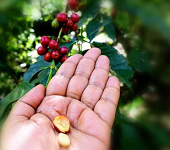The annual export in goods income of Ethiopia for the first time has reached all time high to about $3.5 billion for the current Ethiopian budget year set to be concluded July 7, 2021.
This is indicated by Prime Minister Abiy Ahmed, who responded to questions from the members of the parliament this morning. He also noted that his administration has also managed to stabilize the import of the country in order to narrow the wide imbalance between import and export of commodities.
During the current year, import has only grown by about 0.6 percent, according to Abiy, who noted that boosting export and cutting import by import substitute has been his administrations priority to narrow the wide trade imbalance.
Ethiopia has been importing commodities worth around $16 billion dollars every year, while it has been earning only less than $3.5 billion. To reduce the amount of hard currency the country is spending, Ethiopia has been increasing wheat production and edible oil, which annually have been costing over $2 billion dollars.
The latest annual report of the National Bank of Ethiopia for budget year 2018/19 shows that, 33.3% of total import spending ($5.03 billion) was on capital goods and 28.3% ($4.27 billion) on consumer goods. U.S. exports to Ethiopia in 2019 rose to $1.5 billion, a 14% increase from that of the previous year, accounting for 10% of Ethiopia’s total imports.
Ethiopia’s imports from the United States have increased steadily throughout the past decade, representing approximately a fivefold increase from 2007 through 2019, according to the report of the National Bank of Ethiopia.
In 2018/2019, Ethiopia’s major goods exports included coffee (28.7%), oilseeds (14.5%), chat (11.4%), pulses (10.2%), cut flowers (9.6%), leather and leather products (4.4%) and gold (1%). Ethiopia’s total export earnings by value declined by 6% in 2018/2019 from the previous year. Depressed commodity prices are the leading cause of this drop in exports.

